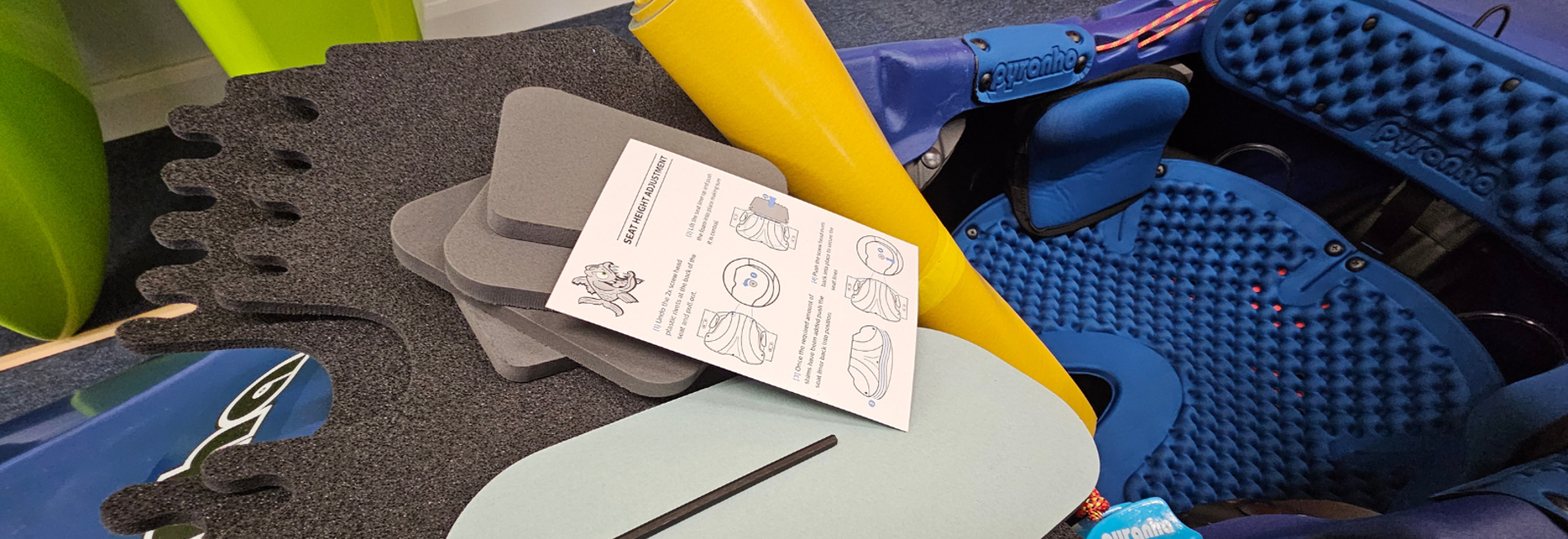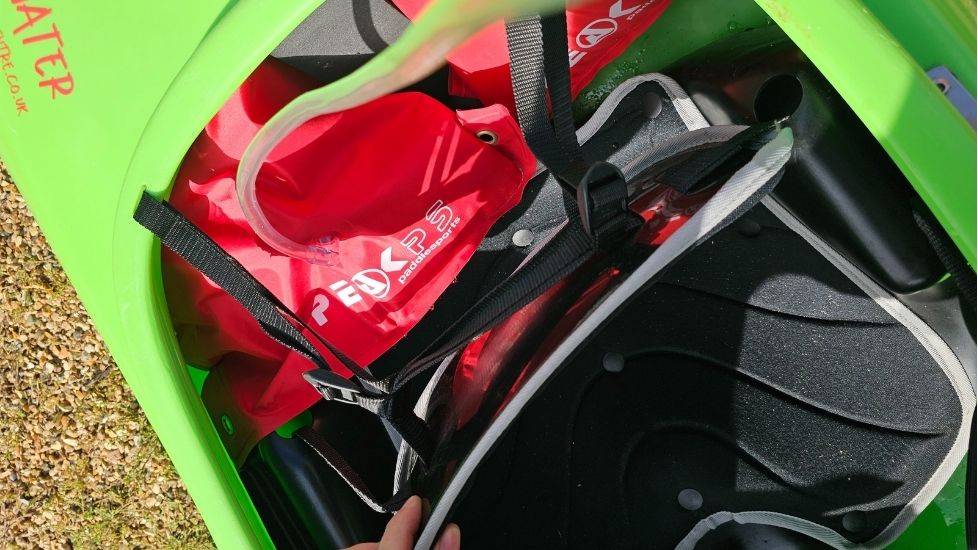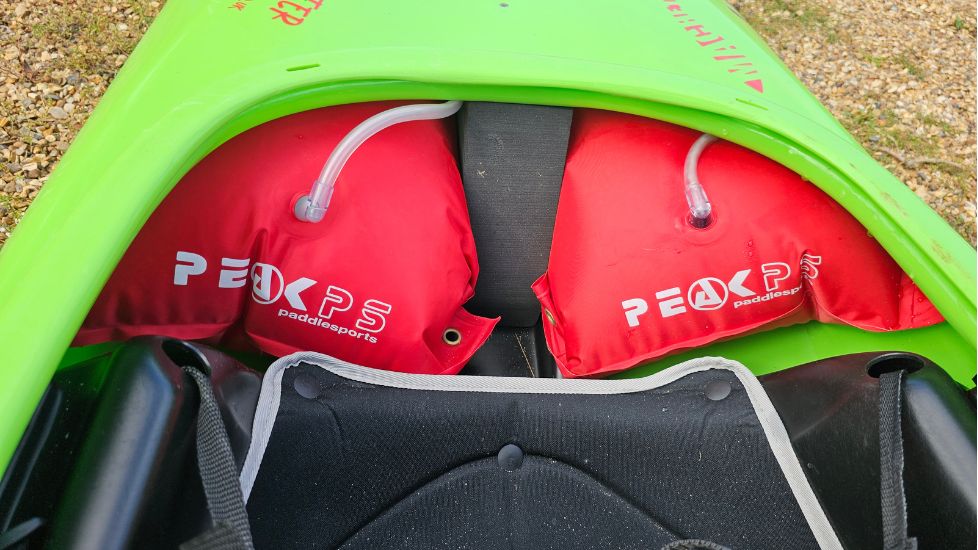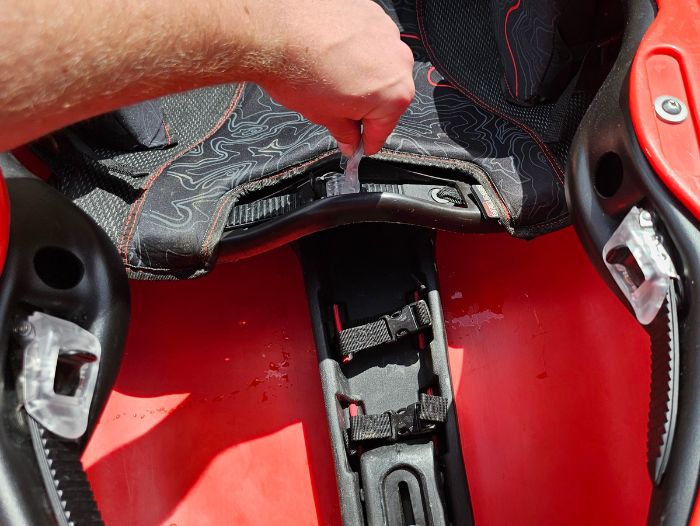
In this guide we are going to be discussing outfitting your whitewater kayak and why this is key to providing you with, not only an enjoyable paddling experience, but also a safe one!
Three Essential Upgrades for Every Whitewater Kayak
1. Equip Your Boat with Airbags
Water is heavy—about 1 kilogram per liter—so adding airbags to your kayak can significantly reduce the weight you need to rescue. For example, two 30-liter airbags provide up to 60 kilograms of buoyancy, making your boat far easier to handle if it takes on water.
Since no one’s immune to swimming, airbags also help minimize damage during a capsize by keeping your boat afloat. Make sure they’re securely tied to your seat and fit snugly. Palm offers a range of sizes, so you can find the perfect fit for any kayak. If you have extra space in front of your footrest (short-legged paddlers, take note!), consider adding front airbags like Peaks airbag bow single.
Palm’s Heavy Weight Float Bag Range
Palm’s airbags are designed to fit perfectly inside modern whitewater kayaks. The 30-liter bag is tailored for larger creek boats like the Dagger Code or Pyranha ReactR, while the 15-liter bag fits smaller playboats such as the Nova Or childrens designs like the Dynamo or Pyranha Rebel. The 25-liter option is ideal for longer boats with a bit less volume in the stern, like the Dagger Rewind or Pyranha Ripper. With dump valves on the larger bags, deflating and storing them is quick and easy.
Palm also have a Mid Weight Float bag range, this consists of three sizes: 15, 20 or 60 L. For kayaks with central foam pillars, a pair of 15 L or 20 L airbags is ideal. For kayaks without central foam, a single 60 L airbag is perfect for filling the stern.
Peak PS have several different sizes of airbag in their range, these consist of:
- Airbag kayak bow single - Durable, welded PVC nylon bow airbag designed to fit most modern kayaks, with or without central buoyancy.
- Split stern airbag (pair) - Extremely durable, welded PVC nylon split stern airbags, designed to fit most modern kayaks.
- XL Stern airbag (pair) - A larger version of the split stern airbag (see above).
To extend the life of your airbags, remove them occasionally to let them dry out and clean out any debris from your kayak. Avoid leaving them fully inflated when stored; letting a little air out prevents pressure buildup. Just give them a quick top-up before paddling, and they’ll be good to go.


2. Customize Your Cockpit
Start by positioning your seat properly. Your center of gravity should be at the kayak’s midpoint (center of flotation). Too far forward, and the nose might dip and catch; too far back, and the tail will drag while the nose rises excessively when surfing. A good balance: on flat water, your bow and stern should float at about the same height.
Small adjustments can make a significant difference. Seat height is a key factor: raising your seat slightly improves your forward reach and leverage but might make the boat feel less stable. If you need a lift, adding foam under your seat pad is an easy fix. Dagger’s Contour Ergo system even has a leg lifter strap for that secure, rally-car-style fit
Next, dial in your hip pads, thigh grips, and backrest. These contact points are essential for control during extreme angles, ensuring you stay secure even if you’re upside down. They should feel supportive without being too tight—if your legs fall asleep, it’s time to loosen up. The Dagger hip pad kit is a great option, featuring adjustable straps and Velcro for an easy, customized fit.
Finally, fine-tune your backrest. A supportive, low-set backband helps you maintain an active, forward-leaning paddling posture. Adjust the lower strap to keep the backband low, preventing discomfort and unwanted “pinching” while paddling. If your kayak doesn’t have an adjustable system, consider upgrading to a Dagger Freestyle Backband for added comfort..jpg)

3. Upgrade Your Footrest
A solid footrest is crucial for effective paddling. Creek boats should have a full-plate footrest with no gaps, providing firm support and protection during impacts. Playboats often come with adjustable foam blocks for easy customization.
Your footrest should be angled to support both your heels and the balls of your feet. Adding foam wedges under your heels can make a substantial difference to your comfort, even if you have limited space or stiff ankles. Dagger’s Creek and River expanding foot cups allow easy footplate adjustments for a perfect fit.
Conclusion
Taking the time to properly outfit your kayak with airbags, a customized cockpit, and a well-padded footrest will make your time on the water safer, more comfortable, and a lot more fun. Now, all I need is some rain for the perfect winter paddling session—see you on the water!
PS: If your boat doesn’t have airbags, don’t count on anyone helping you rescue it.